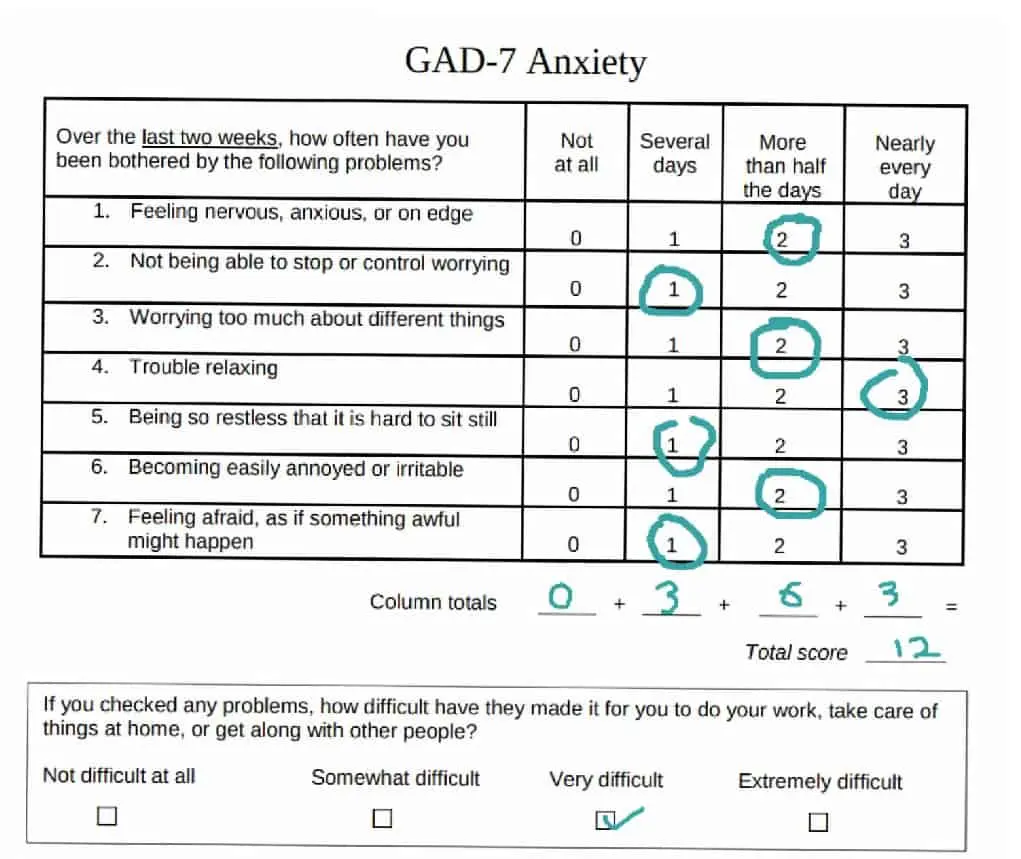As psychologists and social scientists, we constantly tread through veritable jungles of questionnaires. One recurring challenge we’re faced with is efficiently comparing similar questionnaires like the Generalised Anxiety Disorder Assessment (GAD-7) and the Patient Health Questionnaire-9 (PHQ-9). Harmony - a cutting-edge software - offers a solution, specifically to the GAD-7 vs PHQ-9 conundrum. The GAD-7 is a seven-item tool that measures the severity of generalised anxiety disorder, whereas the PHQ-9 is a self-administered instrument that assesses the extent of depression. Despite their distinct purposes, comparing the GAD-7 and PHQ-9 can yield valuable insights into the overlapping elements of anxiety and depression, making it far easier to understand and treat these prevalent mental disorders. The intricacies of comparing questionnaires such as GAD-7 vs PHQ-9 can be quite daunting. Harmonisation is necessary, but often time-consuming and subjective.

| No. | GAD-7 English |
|---|---|
| 1 | Feeling nervous, anxious, or on edge |
| 2 | Not being able to stop or control worrying |
| 3 | Worrying too much about different things |
| 4 | Trouble relaxing |
| 5 | Being so restless that it is hard to sit still |
| 6 | Becoming easily annoyed or irritable |
| 7 | Feeling afraid, as if something awful might happen |
| 8 | If you checked any problems, how difficult have they made it for you to do your work, take care of things at home, or get along with other people? |
This is where the Harmony software steps in, transforming a laborious process into an intuitive and efficient one. Harmony accelerates the questionnaire comparison process for researchers using advanced natural language processing and generative AI models.
This cutting-edge technology helps harmonise items in the GAD-7 and PHQ-9 instruments. It further allows for comparisons in multiple languages, opening the door to even more extensive research possibilities. As you navigate through the GAD-7 vs PHQ-9, researchers can draw on Harmony’s database or upload their own PDF questionnaire versions.
With Harmony, you can measure the percentage match between each item in GAD-7 and PHQ-9 in a seamless interface found at https://harmonydata.ac.uk/app. So, when you are faced with the GAD-7 vs PHQ-9 next, consider inviting Harmony to ease the process. Harmonising GAD-7 and PHQ-9 items has never been easier, allowing researchers to enjoy more time on analysis and less on questionnaire matching, aiding the evolution of our understanding of mental health. Explore the Harmony tool today and experience a new rhythm in psychology research.